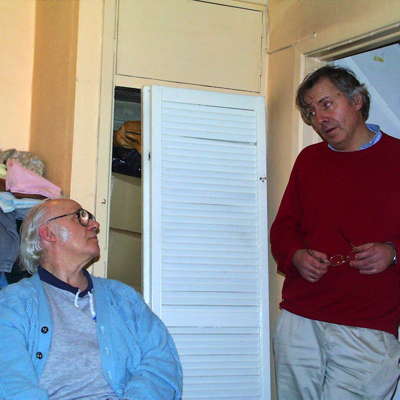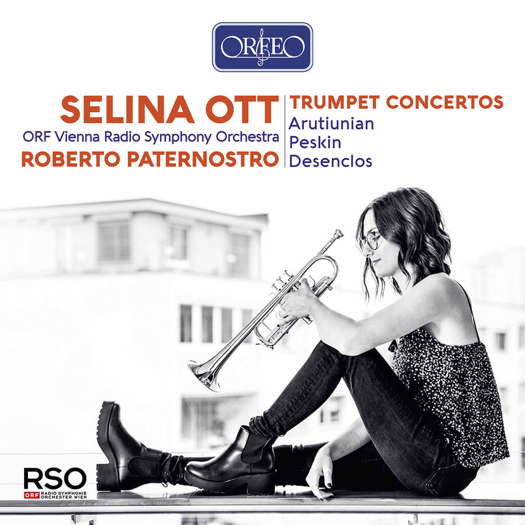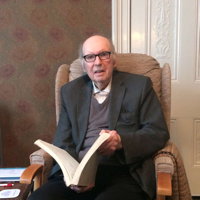 25 YEARS: Classical Music Daily celebrates twenty-five years of daily publication with an hour-long video featuring some of our regular contributors.
25 YEARS: Classical Music Daily celebrates twenty-five years of daily publication with an hour-long video featuring some of our regular contributors.

Stylistic Contrasts
Trumpet concertos by Alexander Arutiunian, Vladimir Peskin and Alfred Desenclos, heard by PAUL SARCICH
'... this is a fine calling card for Selina Ott, who is one of those young players who will be very interesting to watch mature.'
The Austrian trumpeter Selena Ott shot to notoriety when only twenty by winning the trumpet category of the ARD International Music Competition in 2018, the first woman ever to do so. Two years later we have her first album, distinguished by the stylistic contrasts contained in it. Three very different concerti make up the program, the only repertoire piece being Arutiunian's 1950 Concerto in A flat.
This work, written for noted Russian trumpeter Timofey Dokshitzer, sits firmly in the world of expanded tonality and mixes Armenian and western influences, which makes for its continued popularity. From the off, Ott lays out her credentials: clean, well-articulated playing, a sweet and bright sound, not big and powerful but well-focussed and attractive. In this piece she seems to be going for control and accuracy rather than taking any risks or making grand dramatic gestures. The same can be said for many of the orchestral solos coming from the ORF Vienna Radio Symphony Orchestra under Roberto Paternostro.
Hauntingly introspective muted work in the second movement is backed by atmospheric orchestral playing, the most affecting part of the piece so far.
Listen — Arutiunian: Meno mosso (Trumpet Concerto in A flat)
(track 3, 0:00-0:53) ℗ 2020 Orfeo International Music GmbH :
The third movement cadenza sums up the approach: clean and careful, when it could wear more drama.
Vladimir Peskin's First Trumpet Concerto from 1937 was also written for Dokshitzer, who at the age of sixteen rejected it as unplayable, but brought it into his repertoire later. As virtuosic as some of it may be, this never troubles Ott, who negotiates the show-offy stuff without trouble, while showing an expanded sense of lyricism in the melodic passages, and effective use of rubato.
All of which is appropriate, as this is a piece from another age, in full-on Russian romantic style: think a mix of Glazunov, Tchaikovsky, even Rimsky-Korsakov; much of it has the air of either nineteenth century salon music or a cornet solo with wind band. In other words, a rather dated showpiece.
Again one senses the first movement cadenza could wear more drama, but there is a fine line to be walked between that and pushing it into the spit-and-dribble world of the competition cornet solo, and Ott does not cross it. What the silences in the cadenza do show up is the dryness of the whole recording: I would have liked to hear more bloom on the sound of both soloist and orchestra, and a good deal more width in the panning - everything sounds too compacted.
The second movement (again muted) is perhaps where the writing shows its age most, with old fashioned melodic constructions reminiscent of the drawing-room or Russian ballet, with the orchestral writing getting so thick that the muted trumpet can get lost in the mix. A waltzy scherzando third movement put us back on the bandstand in the park. Dokshitzer took this up as a recital piece and one can see why - it's very much up for being a competition piece and serves as a fine showpiece for Ott's nimble playing.
Listen — Peskin: Allegretto scherzando (Trumpet Concerto No 1 in C minor)
(track 7, 0:00-0:56) ℗ 2020 Orfeo International Music GmbH :
Alfred Desenclos's 1953 piece has movements labelled 'Incantation, Thrène et Danse', and with this we enter a very different musical world. Although Desenclos described himself as a Romantic, this music is more dissonant, modernistic, impressionistic - the opening contrasting barbaric outbursts with atmospheric, somewhat Ravellian sound collages. The contrast is striking and takes some getting used to, but there is no denying its dramatic power and musical interest.
The funereal second movement (yet again muted) has a sweetly melancholic air rather than one of bitter grief. The striking orchestration and solo-orchestral interchanges make it very attractive listening indeed, with many orchestral solos and delicate textures all well brought off. The final Danse is preceded by a cadenza, the most spectacular on the disc, and is not a wild orgy but a rather dignified and stately affair overall, very much recalling the world of Daphnis and Chloe and other Ravel pieces. A brief return to the opening barbarism finishes the piece.
Ott names this as her favourite work in the booklet notes, and she does seem to put more of herself into it than the other two pieces. It is certainly the most ear-grabbing piece on the disc and Ott brings out the mixtures of moods, textures and styles to great effect.
Listen — Desenclos: Danse (Incantation, Thrène et Danse)
(track 10, 8:02-9:02) ℗ 2020 Orfeo International Music GmbH :
Despite my reservations about the recording itself, this is a fine calling card for Selina Ott, who is one of those young players who will be very interesting to watch mature. With Alison Balsom now in her forties, and Tine Thing Helseth in her thirties, the gap is opening up for the next generation of female trumpet stars. Selina Ott seems ready to step into it.
Copyright © 15 March 2021
Paul Sarcich,
London UK

CD INFORMATION: SELENA OTT - TRUMPET CONCERTOS
MORE ARTICLES ABOUT TRUMPET MUSIC



